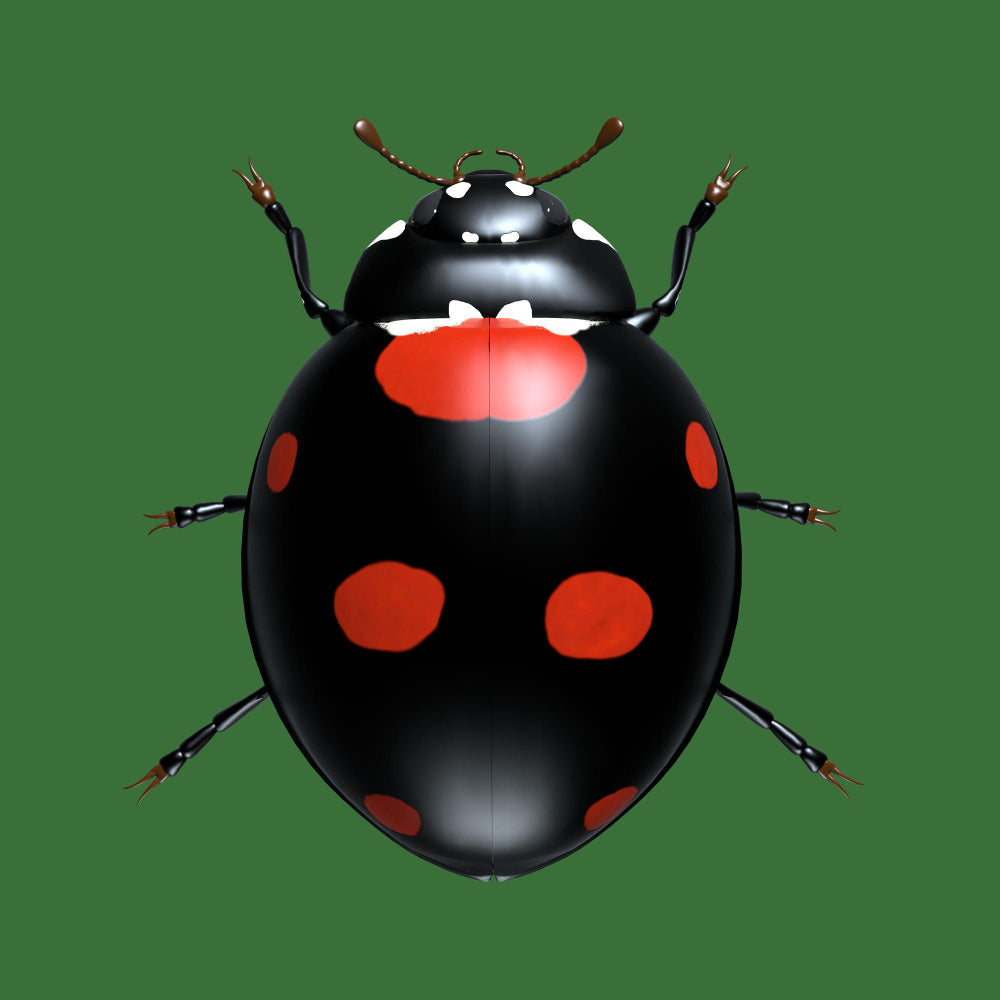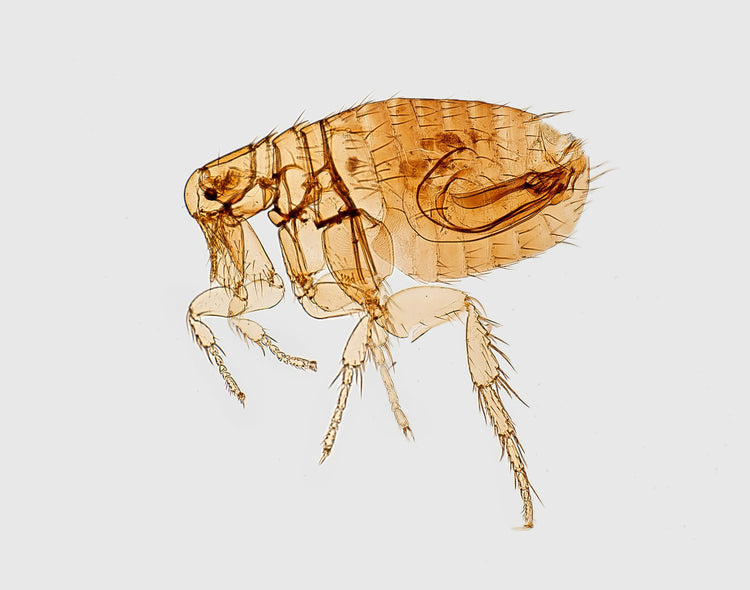Are Black Ladybirds with Red Spots Dangerous?


Related products
Ladybirds, commonly known as ladybugs in some regions, are a well-recognised group of beetles known for their rounded bodies and distinctive markings. Among the various species, the black ladybirds with red spots, scientifically named Harmonia axyridis, often prompt inquiries regarding their impact on human health and safety. The primary concern addressed in this article is the potential danger these insects pose.
What is a Black Ladybirds with Red Spots?
The black ladybird with red spots belongs to the family Coccinellidae and is classified under the genus Harmonia. Known scientifically as Harmonia axyridis, it is often referred to as the harlequin ladybird due to its variable colour patterns. This species was originally native to Asia but has spread to other continents, primarily through international trade.
These ladybirds are distinguished by their shiny, black elytra (wing covers) adorned with two to four red spots. An adult typically measures between 6 to 8 mm in length. The contrast between their black bodies and red spots is thought to be a form of aposematism, serving as a warning to predators about the beetles' potential toxicity.
Harmonia axyridis has a broad habitat range, thriving in gardens, forests, and agricultural fields. Originally found in Asia, their presence has expanded across Europe, North America, and beyond due to their adaptability to various climates and environments. This widespread distribution raises concerns about their impact on local ecosystems and the potential risks they pose in new territories.
What are the Behavioral Traits of Black Ladybirds with Red Spots?
Black ladybirds with red spots are predominantly aphidophagous, feeding on aphids and other soft-bodied insects. This diet makes them highly beneficial in agricultural and horticultural settings as natural pest control agents. However, their behaviour can change based on environmental conditions, sometimes leading them to enter human dwellings during colder months.
Interaction with the Environment and Other Species
The introduction of Harmonia axyridis into non-native environments has led to competition with indigenous ladybird species. Their aggressive nature and generalist predatory habits allow them to outcompete and sometimes displace local species, altering the biodiversity of the habitats they invade.
Seasonal Patterns and Migration Behaviors
These ladybirds exhibit marked seasonal patterns, particularly in their migration habits. In autumn, large numbers of Harmonia axyridis can be observed congregating on the sunny sides of buildings to seek warmth and shelter for overwintering. This seasonal migration into human-inhabited areas prompts a closer examination of their interactions with humans and domestic animals.
Common Myths about Ladybirds
A prevalent myth about ladybirds is that their colouration is an indicator of their toxicity or level of danger. In reality, while the bright colours of ladybirds can indicate chemical defences against predators, the specific colour pattern does not always correlate with the level of toxicity.
Specifically, the black and red colouration of Harmonia axyridis is often mistakenly believed to signal a high degree of danger. However, the toxicity of this species to humans is relatively low. Educational efforts are necessary to dispel such myths and provide accurate information on the actual risks these insects pose.
What are the Potential Risks to Humans and Pets of Black Ladybirds with Red Spots?
Research indicates that the reflex bleeding (the release of a toxic chemical when threatened) of Harmonia axyridis contains alkaloids that are mildly toxic to small predators. Dr. Emily Thorn, a leading entomologist, notes, "The concentrations of these chemicals are too low to cause serious harm to humans, but they can be irritating if the insects are crushed against the skin."
Contrary to some concerns, black ladybirds with red spots do not possess stingers. However, they can bite if provoked. These bites are generally not harmful but may cause minor irritation or redness, primarily due to the surprise rather than the severity of the bite.
Potential Allergic Reactions
In rare cases, individuals with certain sensitivities might experience allergic reactions to the proteins secreted by Harmonia axyridis. Such reactions are typically mild, presenting as dermatological symptoms. Dr. Adrian Hale, a dermatologist, advises, "While uncommon, allergic reactions to ladybird secretions should be treated promptly to prevent complications, particularly in sensitive individuals."
What is the Environmental Impact of Black Ladybirds with Red Spots?
The black ladybird with red spots, Harmonia axyridis, plays a dual role in its ecosystem. As a predator of aphids and scale insects, it helps control these pest populations, which can be beneficial for the health of many plants. However, its effectiveness in pest control must be balanced against its potential to disrupt local ecosystems.
Impact on Local Wildlife and Plants
The introduction of Harmonia axyridis into non-native environments has had significant impacts on local wildlife, particularly other insect species. Its competitive nature can lead to a decrease in native ladybird populations as it competes for the same food sources. Furthermore, there are concerns about their potential to indirectly affect plant health by outcompeting other pollinators or beneficial insects.
Benefits to Gardening and Agriculture
Despite their potential negative impacts, black ladybirds with red spots are highly valued in agriculture and horticulture for their pest control capabilities. They can significantly reduce the need for chemical pesticides, leading to more sustainable farming practices. The challenge lies in managing their populations to maximise these benefits while minimising ecological disruption.
Management and Prevention
To manage the presence of Harmonia axyridis in human environments, especially during their autumn migration indoors, sealing entry points such as window frames and doors can be effective. Ventilation systems should also be checked to prevent indoor infestations.
Regular maintenance of garden areas, including the removal of overwintering sites, can help reduce ladybird populations around homes. Biological control measures, such as encouraging the presence of natural predators, can also help keep their numbers in check without resorting to chemical solutions.
If removal is necessary, it is advisable to gently collect the ladybirds using a soft brush and a dustpan or a vacuum cleaner with a stocking over the nozzle to prevent harm. Chemical means should be avoided as they could harm both the ladybirds and the environment.
Comparison with Other Ladybird Species
Harmonia axyridis differs from more common species such as the seven-spot ladybird (Coccinella septempunctata) in several ways. While both species are avid consumers of aphids, the harlequin is more aggressive and adaptable, which allows it to outcompete native species in many environments.
The broader diet of Harmonia axyridis, compared to that of more specialised species, contributes to its success in various environments but also poses a greater threat to ecological balance. Its ability to thrive in diverse climates further enables it to have a more widespread impact.
People Also Ask
Are Small Black Ladybirds Poisonous in the UK?
In the UK, small black ladybirds, including Harmonia axyridis, are not poisonous but can secrete a mildly irritating substance. The risk to humans from this secretion is low.
What Happens if a Black Ladybird Bites You?
A bite from a black ladybird can result in a small, red mark and may cause minor irritation. Typically, these symptoms are mild and transient. Washing the affected area with soap and water usually suffices.
To learn about other bug bites, continue reading Insect Sting Allergy: Symptoms, Causes, Diagnosis, Treatments, and Preventions
Conclusion
In conclusion, while black ladybirds with red spots are not inherently dangerous to humans, their impact on local ecosystems can be profound. Effective management and understanding of Harmonia axyridis are crucial to maintaining ecological balance and harnessing their benefits in pest control. Continued research and public education will play vital roles in achieving these goals, ensuring that the presence of these insects contributes positively to both agricultural and natural environments.
















 Rated Excellent by 26,523+ Reviews
Rated Excellent by 26,523+ Reviews